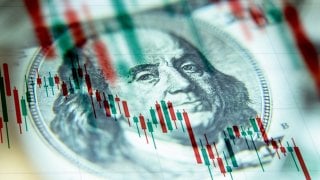2024: The Year the U.S. Economy Could Enter a Recession
It is often said that generals fight the last war. Something similar can perhaps be said of Jerome Powell’s Federal Reserve. At a time when a regional banking crisis is brewing that could precipitate a meaningful recession, the Fed continues to battle inflation even though it is already close to reaching its inflation target.
Shortly after the 2008–2009 Great Economic Recession, an apocryphal story circulated about the captain of the Titanic. When asked in the investigation of the Titanic’s sinking why he did not steer the ship away from the iceberg, he answered, “What iceberg?”
Although the vessel’s actual captain went down with the ship, the story parallels the behavior of the Federal Reserve in 2008. Despite signs of serious problems brewing in the sub-prime loan and housing markets, the Fed was caught flat-footed when those problems precipitated the Lehman-induced world economic and financial market crisis. Indeed, earlier in the year, the then Fed Chairman Ben Bernanke dismissed the sub-prime problems as nothing serious. Meanwhile, on the eve of the financial crisis, the Fed was still debating whether or not to raise interest rates.
In gauging the U.S. economic outlook for 2024, a key question is whether something similar to what happened in 2008 might happen again today. While serious troubles are brewing in the commercial real estate market and at the regional banks that could lead to a credit crunch, the Fed sticks to its mantra of high-interest rates for longer to regain inflation control. At the same time, in the Fed’s policy statements and at Jerome Powell’s press conferences, no mention is made of the financial system risks to the economic recovery.
The deafening silence about the possibility of a major financial crisis next year is all the more surprising considering the regional bank troubles we have already had earlier in the year with the failure of Silicon Valley Bank and First Republic Bank. Those were the second and the third largest U.S. banking failures on record. It is even more surprising considering the deep trouble in which the real commercial property sector finds itself both as a consequence of Covid-induced changes in work and shopping habits as well as of the most aggressive Fed interest rate hiking cycle in the past four decades.
It is difficult to overstate the commercial property sector’s woes. Vacancy rates are already at record levels and will increase as leases expire. At the same time, commercial property prices have already fallen by 22 percent since early 2022 and are expected by Morgan Stanley to decline precipitously before this cycle is over.
Next year, commercial property owners must roll over around $500 billion in maturing loans at much higher interest rates than originally contracted. It is difficult to see how owners will roll over these loans without significant debt restructuring. A troubling sign of what is likely to become a wave of property defaults is that a number of important players in this space, such as Brookfield and Blackstone, are walking away from their mortgages and “handing back the keys” to the lenders.
All of this spells real trouble for the banking sector in general and the regional banks in particular. With as much as 18 percent of their loan portfolio consisting of commercial real estate loans, the regional banks can ill-afford a wave of property loan defaults. This is especially the case at a time when these banks are still losing deposits in the wake of the Silicon Valley Bank failure and when they are nursing substantial mark-to-market losses on their bond portfolios as a result of the Fed-induced rise in long-term interest rates. According to a recent National Bureau of Economic Research Study, commercial real estate troubles could lead to the failure of 385 regional banks if interest rates were to remain at their current levels.
It is often said that generals fight the last war. Something similar can perhaps be said of Jerome Powell’s Federal Reserve. At a time when a regional banking crisis is brewing that could precipitate a meaningful recession, the Fed continues to battle inflation even though it is already close to reaching its inflation target. It does not bode well for next year’s economic outlook that the Fed looks set to get caught as flat-footed by another round of the regional bank crisis as it was in 2008 by the sub-prime loan crisis.
About the Author
American Enterprise Institute Senior Fellow Desmond Lachman was a deputy director in the International Monetary Fund’s Policy Development and Review Department and the chief emerging-market economic strategist at Salomon Smith Barney.
Image Credit: Shutterstock.


